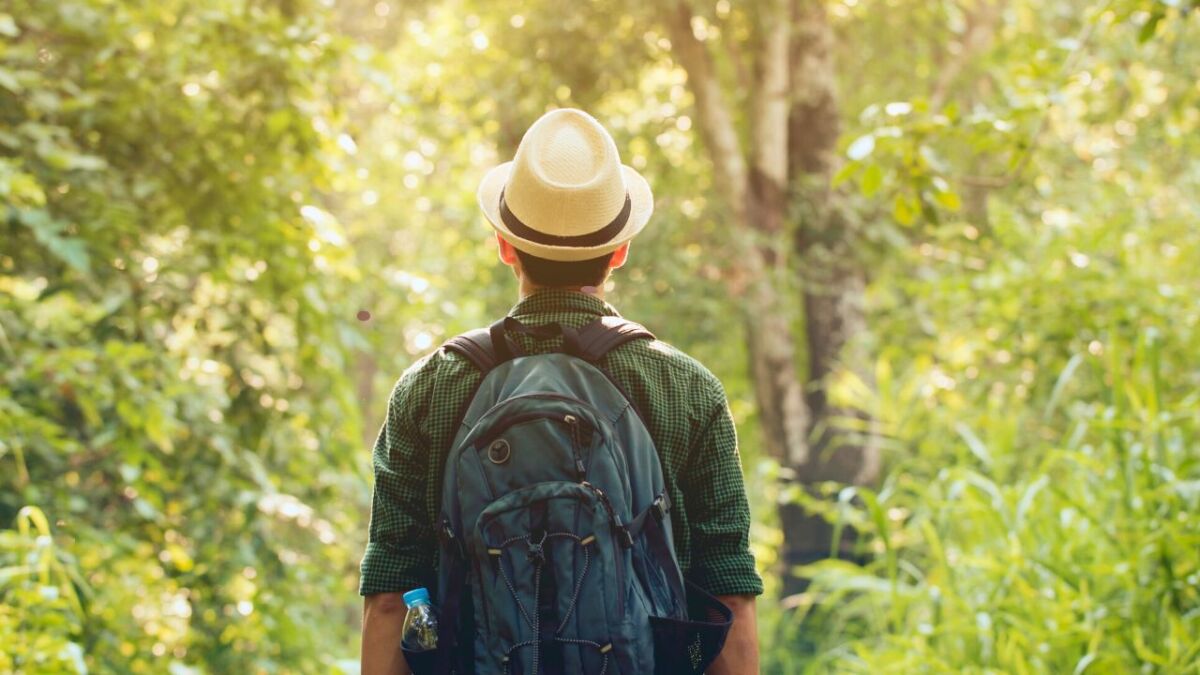
Headwear: Why is it so important in the summer for camping, hiking and bushcrafting?
👉 The key facts from this guide
- Protect your head and face from UV radiation to reduce the risk of sunburn and skin cancer.
- Keep a cool head and prevent sunstroke or heat stroke with suitable headgear.
- Protect your eyes from direct UV light and possible diseases such as cataracts.
- Keep insects away from your head and face with cloths or mosquito nets.
- Choose the appropriate headgear for different outdoor conditions, such as hats, caps, or bandanas.
- When purchasing headgear, pay attention to good fit, sufficient protection and comfortable wear.
In the city, you can see all sorts of headgear. From hats to caps, bandanas to hijabs, everything is available. Here, they mostly serve fashion or religious purposes.
But even when you're outdoors, you should definitely remember to wear a head covering.
However, not for fashion here, but mainly for self-protection.
As you can already imagine, the sun is one of the main factors that a hat protects you from. However, there are other influences.
Which ones they are and which headgear is suitable for you, you will find out in this guide.
Which headgear is suitable for the wilderness?
In summer, hats, caps, and headscarves/bandanas are in fashion.
- Hats are highly recommended as they protect you from the sun all around. There are various types. I will explain later which one I consider the best.
- Caps, on the other hand, only protect your face, but in my experience, they often fit better. This makes them less susceptible to wind.
- Bandanas or scarves made of cotton, on the other hand, can be used flexibly. You can also wrap a scarf around your face and reliably protect yourself from the sun. Another advantage is absorbency. There is nothing more pleasant than having a wet cloth on your head when it's over 30 degrees.
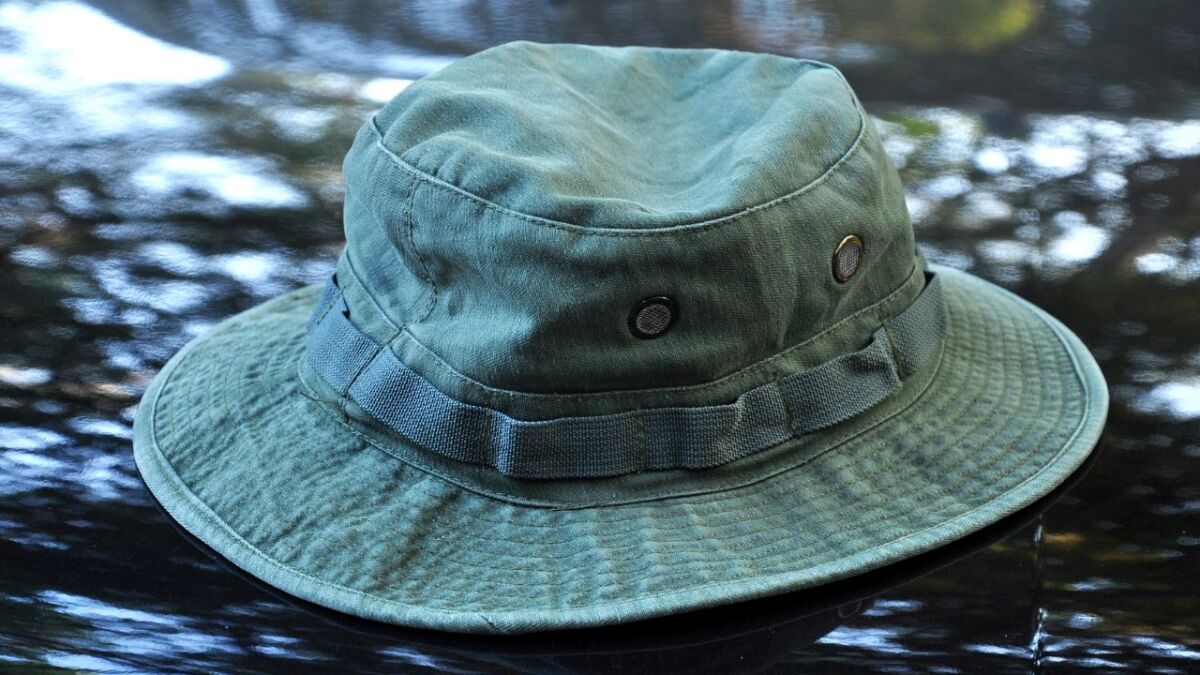
In the other seasons, depending on the temperature, the hat, or the bandana/buff proves to be useful. Buffs and scarves can be used versatile as a scarf or head covering and are therefore extremely practical.
In this guide, however, I will focus more on summer equipment.
Why you should cover your head in summer
1. Protect head and face from UV radiation
First, the obvious: a hat, cap, or scarf protects your skin from the potentially harmful UV radiation of the sun. From sunburn to skin cancer, a hat can protect you from these woes. At least on your face.
Skin cancer should not be underestimated with three million cases worldwide each year. By taking sufficient protection, you can at least reduce the risk.
Be aware that a cap does not protect your neck. Ideally, you can tie a scarf in such a way that all exposed areas of skin on and around your head are protected.
However, there are also hats that do not provide enough shade due to a small brim. So be careful here.
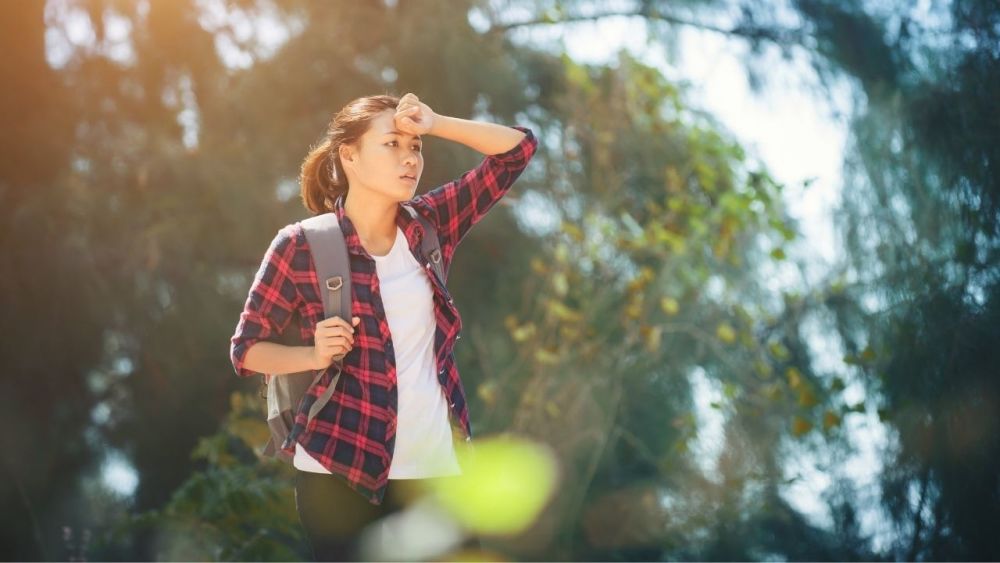
2. Keep a cool head
Direct sunlight heats the surface it hits. A hat protects you from direct sunlight and can keep your head cool.
Dark-haired or bald people can sing a song about it, as they are particularly susceptible to the heat.
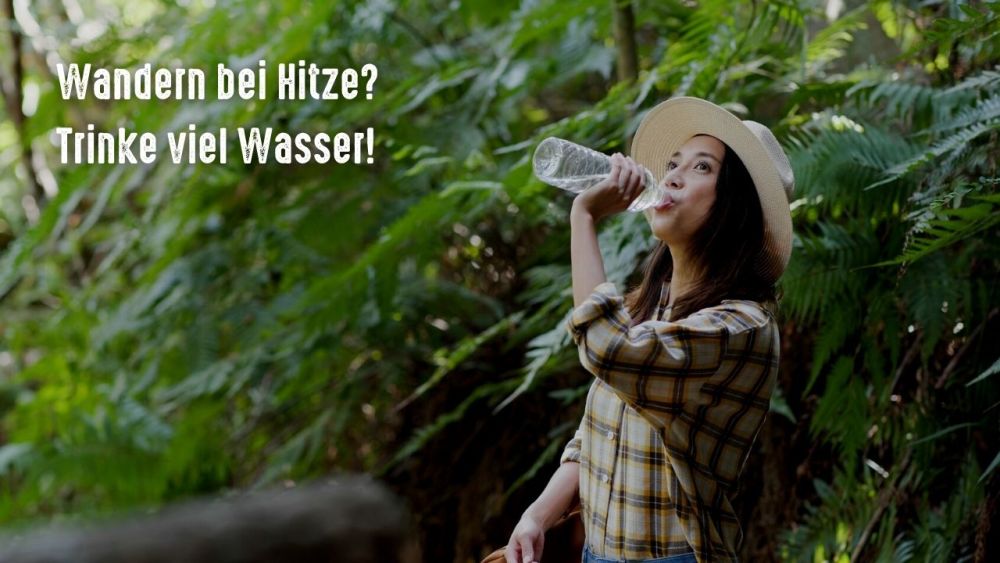
3. Preventing sunstroke or heat stroke
Sunstroke or heatstroke are both conditions caused by extreme heat, but they also have significant differences.
A sunstroke only affects the head and neck of the affected person. Here, the meninges are irritated so strongly that typical symptoms such as headache and nausea occur.
The heat stroke, on the other hand, impacts the entire body. Because at temperatures above 40 degrees, the temperature regulation systems fail and thus the sweat production is stopped.
Further symptoms are
- Impaired consciousness
- Fever
- Headache
- Nausea
- Seizures
- Organ failure
Read also
Survival in summer: Surviving extreme heat without air conditioning (+ tips for the desert) - It's hot where you are, there's a heatwave, and you don't have an air conditioner? Find survival tips here for dealing with heat in the city, in the forest, and in the desert.
A hat may not save you from extreme heat, but it can protect one of the most important parts of your body from direct heat.
To avoid heat stroke, you should drink enough and not overexert yourself. Especially in a survival situation, you would rather not be exposed to such symptoms. Therefore, take it easy during hot temperatures.
The right hat can also help limit your water loss. A fabric hat stays moist and cools your head. Without fabric directly on your skin, you would just keep sweating.
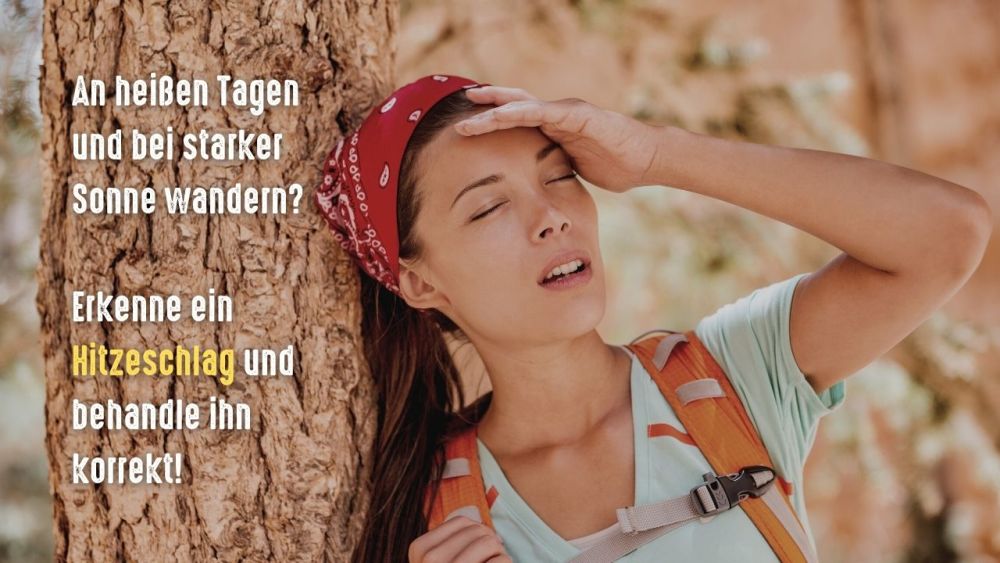
4. Protect your eyes
The direct UV light can also impair your vision. Personally, I don't like wearing sunglasses, and I'm grateful that my headgear does this job for me.
There is evidence that sunlight is responsible for diseases such as cataracts. In the worst case, this disease can even lead to blindness.
Less tragic is the pterygium, which distorts the conjunctiva and is also suspected to be caused by UV radiation.
Here, cloths, bandanas, and buffs are naturally not as effective, as the eyes are left uncovered.
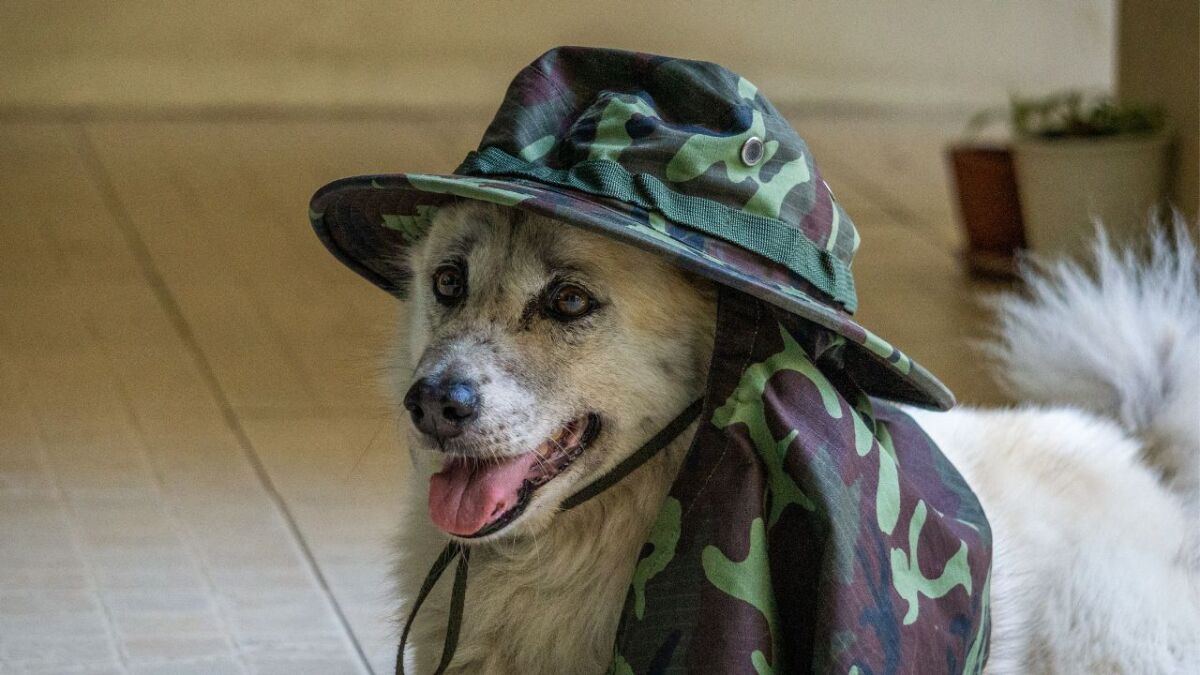
5. Protection against insects
Climate change promotes the spread of more unpleasant species from the insect kingdom and is already causing real plagues in Europe. It is all the more important to protect oneself and not turn a wilderness stay into a mosquito feast.
In my opinion, cloths clearly have the upper hand in this regard. Here you can protect your head specifically from the little attackers and still maintain optimal mobility.
Alternatively, there is a mosquito net available for hats and caps, which covers your entire head and neck. In the tropics, I wouldn't want to be without such a net, but here in Germany, a cloth in front of my mouth and especially on my neck often suffices.
Read also
Why do people wear long, black clothing in the desert? - In the desert, the population wears long black garments, usually made of thick fabrics. Why don't they wear a T-shirt and instead wear black clothing?
When do I reach for which headgear?
Various conditions require different measures.
As mentioned before, a cloth is excellent for areas with high mosquito activity. If you are facing extreme heat and sun exposure, a hat or cap is your best choice. If it's hot, and you're looking for something breathable, a straw hat can also be useful.
As always, proper preparation is key when you're outdoors. I always carry a cloth with me as it is versatile and can be used in many ways. Additionally, I typically wear a hat. It is important to choose the right hat. A straw hat that gets blown off your head by the next strong wind is not very practical.
For me, the Boonie hat (here's a selection) and the sun hat with neck protection (check it out here) have proven themselves, which are made of fabric and mostly equipped with a chin strap.
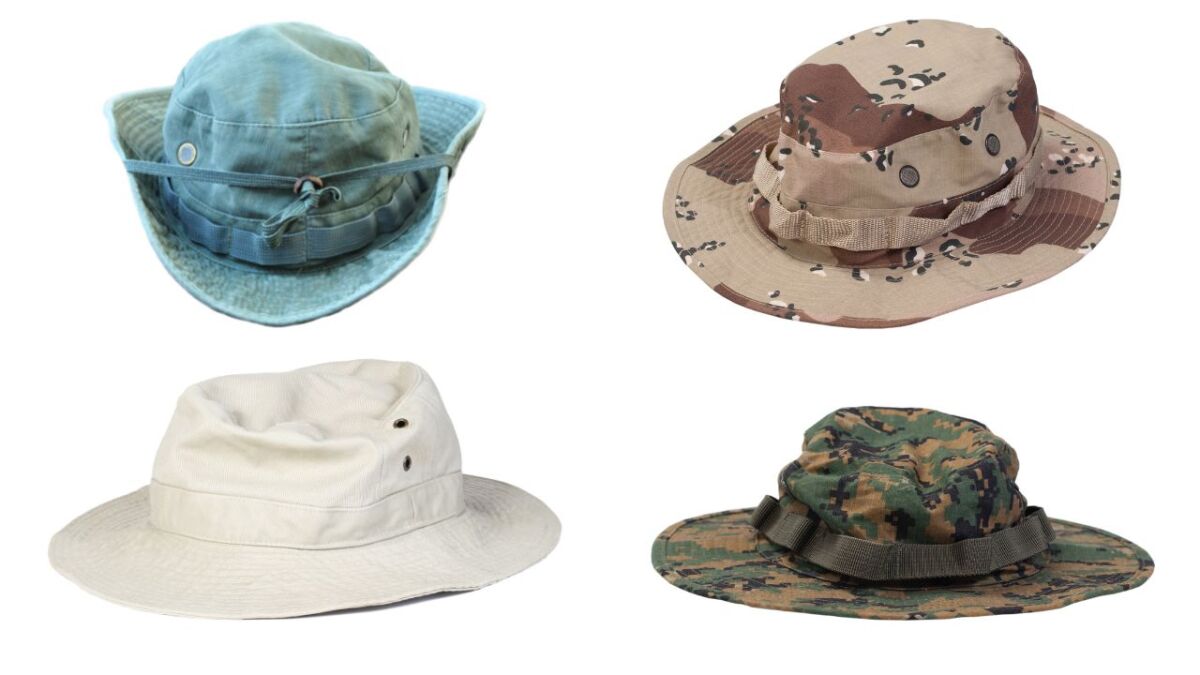
The chin strap keeps the hat on your head even in windy conditions, and the absorbent fabric keeps your head cool. If you want to be fully prepared, you can also get an insect net (buy here).
What's also great about fabric hats is that they are thin and foldable, making them easy to store.
Questions and Answers
What sun protection should I use when hiking?
If you go hiking, you should select a sunscreen with a high sun protection factor (SPF). A sunscreen with SPF 50+ provides excellent protection against the harmful UV rays of the sun. Additionally, you should wear a long-sleeved shirt and a hat.
What should I consider when buying my first hat?
When buying a hat, you should definitely make sure that the hat fits perfectly (i.e., matches your head circumference), you feel comfortable, and it is pleasant to wear. It is also important that the hat has the right size and covers all the important parts of your body.
How do I protect my face from the sun while hiking?
Some precautions you can take while hiking in the sun are: Wear a hat or hood to protect your face from the sun. Use a cloth or towel to wipe away sweat. Avoid hiking in the direct midday sun. Seek shade whenever possible. And always apply sunscreen to your skin.
Read also
9 great tips for hiking in hot weather - Hiking in the heat can be dangerous if you don't know how to help yourself. Find here 9 tips that will make hiking on a hot day enjoyable for you.
How to prevent sunburn while hiking?
The best remedy for sunburn is a sunscreen with a high sun protection factor.
Which material provides the best protection against sunlight?
Sun protection fabrics are available in various materials, including wool, silk, cotton, linen, and polyester. Wool and silk offer the best sun protection, while cotton and linen are slightly weaker. Polyester is the weakest.
What are the two types of sun protection?
There are chemical and physical ways to protect yourself from the sun. Sunscreen: These products contain active ingredients that protect the skin from the penetration of UV rays. In most cases, these products are available in the form of a spray or cream and need to be applied to the skin. Sun protective clothing: These garments are designed to protect the skin from UV rays. They are available in various fabrics and designs.
What is the difference between SPF 30 and SPF 50?
The difference between SPF 30 and SPF 50 is that SPF 50 provides protection against 98% of UV rays, while SPF 30 only protects 96%.
Which color is best for sun protection?
The best color for sun protection is white. White reflects the most solar energy and creates a cool sensation on the skin.
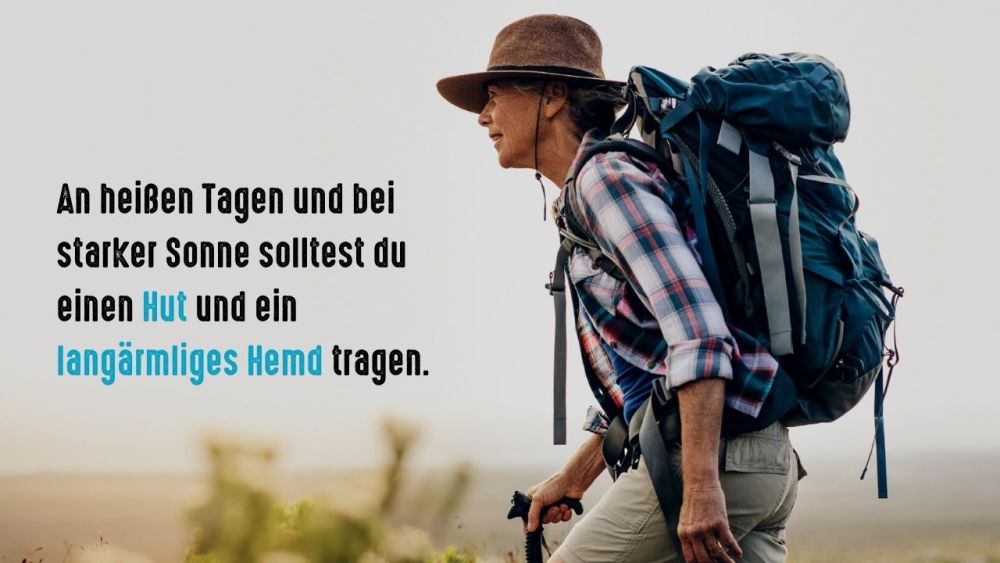
Conclusion: Wearing a head covering in hot weather is a great way to keep yourself cool.
It is important to protect your skin from the sun. Hats protect the face and head from harmful sun rays.
This reduces your risk of developing skin cancer, especially if you have fair skin.
Hats continue to protect your eyes and ears from insects, keep you cool in hot weather, and keep your head warm when it's cold outside.
If you are interested in the topic of clothing for hiking, you should read now: Hiking in any weather: How do you dress for hiking in nature?

Sources for the guide
https://bushcraftinfo.com/why-you-should-always-wear-a-hat-when-outdoors/
https://www.ukw.de/augenklinik/schwerpunkte/hornhaut-und-bindehaut/nahtlose-pterygium-operation/
https://www.bw-online-shop.com/boonie-hat-schwarz-groesse-gr-l-59-60.html
https://www.gesundheitsinformation.de/grauer-star-katarakt.html
https://www.netdoktor.de/krankheiten/hautkrebs/
https://www.tk.de/techniker/magazin/reisen/reisen-ohne-risiko/hitzschlag-2009174

Author of the guide
Martin Gebhardt
Hey, I'm Martin. On my blog, you will learn the basics and numerous details about living in the wild. I think survival, bushcraft and the good life in nature are the keys to happiness. Find me here on Instagram or on YouTube. You can find more about my mission on the About Me page.
Was this guide helpful?
26 people found this guide helpful.
5.00 out of 5 points (26 Ratings)
Comments (0)
This post may contain affiliate links. So if you click on the links and make a purchase, I will receive a small commission at no additional cost to you. Click here, to learn more about it.


